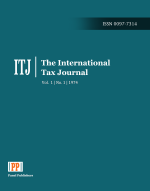Health nutrition and economic growth nexus
Evidence from panel Granger causality test
Keywords:
Nutrition, Economic Growth, health care expenditure, bootstrap panel causality test, Cross-sectional dependence, HeterogeneityAbstract
The study investigates the causal relationship between healthcare expenditure, nutrition and economic growth in 10 countries representative of the Middle East & North Africa over the period 2000:2024. Bootstrap panel Granger causality test approach is used taking into account the cross-sectional dependency and the heterogeneity in these countries. The empirical results support a bi-directional causality between economic growth and nutrition in Tunisia and Iran. The same a bi-directional causality is supported in empirical results of economic growth and health care expenditure in Algeria and way granger causality is supported in economic growth and health care expenditure in Tunisia, Saudi Arabia and Jordan. We concluded a way granger causality is supported in health care expenditure and economic growth in Morocco and Iran. We also found way granger causality in the economic growth and nutrition in Egypt, Morocco, Jordan and Lebanon. The result of the causality tests reveal a way granger causality in nutrition and economic growth in Oman.
Downloads
References
1. Ainsworth, M., & Over, M. (1994). AIDS and African development. World Bank Research Observer, 9, 203 – 240.
2. AK, R. (2012). The Relationship between Health Expenditures and Economic Growth: Turkish Case. International Journal of Business Management and Economic Research (IJBMER), 3(1), 404-409.
3. Bakare, A., & Olubokun, S. (2015). Health Care Expenditure and Economic Growth in Nigeria: An Empirical Study. Journal of Emerging Trends in Economics and Management Sciences (JETEMS), 2(2), 83-87.
4. Barro, R. (1996). Determinants of economic growth: a cross-country empirical study.
5. Barro, R. (1996). Health and Economic Growth.
6. BERG, D. (1968). MALNUTRITION AND NATIONAL DEVELOPMENT ALAN. Journal of Tropical Pediatrics, 14(3), 116–123.
7. Breusch, T., & Pagan, A. (1980). The lagrange multiplier test and its applications to model specification in econometrics. The Review of Economic Studies, 47(1), 239–253.
8. Bukhari, S., & Butt, M. (2007). The direction of causality between health spending and GDP: the case of Pakistan. Journal of the Development of Economics, 45(1), 125 – 140.
9. Chantzaras, A., & Yfantopoulos, J. (2018). Financial protection of households against health shocks in Greece during the economic crisis. Social Science & Medicine, 211, 338-351. doi:https://doi.org/10.1016/j.socscimed.2018.06.024
10. Elmi, Z., & Sadeghi, S. (2012). Health care expenditures and economic growth in developing countries: panel co-integration and causality. Middle-East Journal of Scientific Research, 12(1), 88-91. doi:10.5829/idosi.mejsr.2012.12.1.64196
11. Erdil, E., & Yetkiner, I. (2009). A panel data approach for income-health causality, The Economics of Health Reforms. American Economic Review, 41(4). doi:http://dx.doi.org/10.1080/00036840601019083
12. Fogel, R. (1994). Economic Growth, Population Theory, and Physiology: The Bearing of Long-Term Processes on the Making of Economic Policy. The American Economic Review, 84(3), 369-395. doi:https://www.jstor.org/stable/2118058
13. Fogel, R. (1997). Chapter 9 New findings on secular trends in nutrition and mortality: Some implications for population theory. Handbook of Population and Family Economics, 1(A), 433-481. doi:https://doi.org/10.1016/S1574-003X(97)80026-8
14. Granger, C. (1969). Investigating Causal Relations by Econometric Models and Cross-spectral Methods. Econometrica, 37(3), 424-438. doi:https://doi.org/10.2307/1912791
15. Kónya, L. (2006). Exports and growth: Granger causality analysis on OECD countries with a panel data approach. Economic Modelling, 23(6), 978-992. doi:https://doi.org/10.1016/j.econmod.2006.04.008
16. Mehrara, M., & Firouzjaee, B. (2011). Granger Causality Relationship between Export Growth and GDP Growth in Developing Countries: Panel Cointegration Approach. International Journal of Humanities and Social Science, 1(16), 223-231. doi:https://www.ijhssnet.com/journals/Vol_1_No_16_November_2011/25.pdf
17. Mehrara, M., & Musai, M. (2011). Health Expenditure and Economic growth: An ARDL Approach for the Case of Iran. Journal of Economics and Behavioral Studies, 3(4), 2220-6140.
18. Odubunmi, A., Saka, J., & Oke, D. (2012). Testing the cointegrating relationship between health care expenditure and economic growth in Nigeria. International Journal of Economics and Finance, 4(11), 99-107.
19. Ogundari , K., & Abdulai, A. (2013). Examining the heterogeneity in calorie–income elasticities: A meta-analysis. Food Policy, 40, 119-128. doi:https://doi.org/10.1016/j.foodpol.2013.03.001
20. Pesaran, H. (2004). General Diagnostic Tests for Cross Section Dependence in Panels. Journal of Econometrics, 69(7), 1-39. doi:https://papers.ssrn.com/sol3/papers.cfm?abstract_id=572504
21. Pesaran, H., & Yamagata, T. (2008). Testing slope homogeneity in large panels. Journal of Econometrics, 142(1), 50-93. doi:https://doi.org/10.1016/j.jeconom.2007.05.010
22. Pesaran, H., Ullah, A., & Yamagata, T. (2008). A bias‐adjusted LM test of error cross‐section independence. The Econometrics Journal, 11(1), 105–127. doi:https://doi.org/10.1111/j.1368-423X.2007.00227.x
23. Rivera, B. (2001). The effects of public health spending on self-assessed health status: an ordered probit model. Applied Economics, 33(10), 1313-1319. doi:https://doi.org/10.1080/00036840010007146
24. Taban, S. (2006). Türkiye’de Sağlık ve Ekonomik Büyüme Arasındaki Nedensellik İlişkisi. Sosyoekonomi Journal, 2, 31-46.
25. Tang, C. (2009). An Examination of the Government Spending and Economic Growth Nexus for Malaysia Using the Leveraged Bootstrap Simulation Approach. Global Economic Review, 38(2), 215-227. doi:https://doi.org/10.1080/12265080902903266
26. Wang, K.-M. (2011). Health care expenditure and economic growth: Quantile panel-type analysis. 28(4), 1536-1549. doi:https://doi.org/10.1016/j.econmod.2011.02.008
27. Zafar, A. (2011). Mauritius: An Economic Success Story. Dans W. Bank. World Bank.
Downloads
Published
How to Cite
Issue
Section
License
Copyright (c) 2025 The International tax journal

This work is licensed under a Creative Commons Attribution-NonCommercial-NoDerivatives 4.0 International License.








